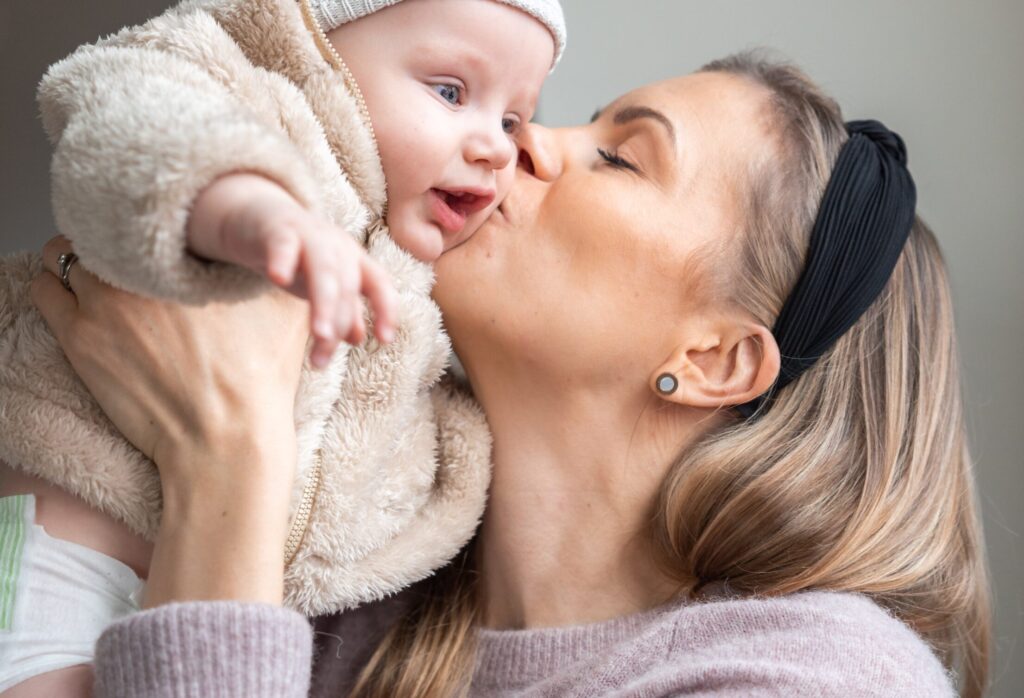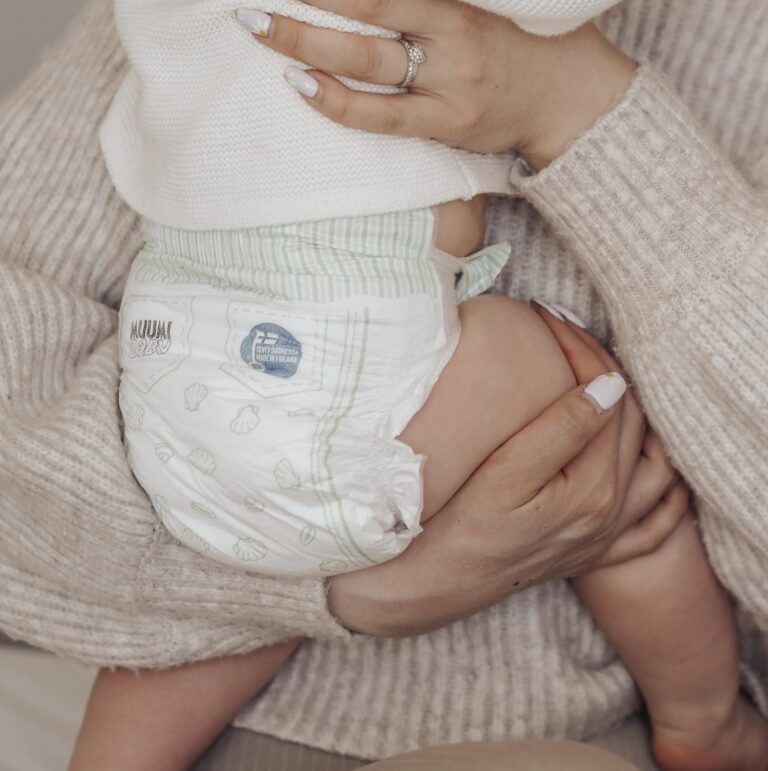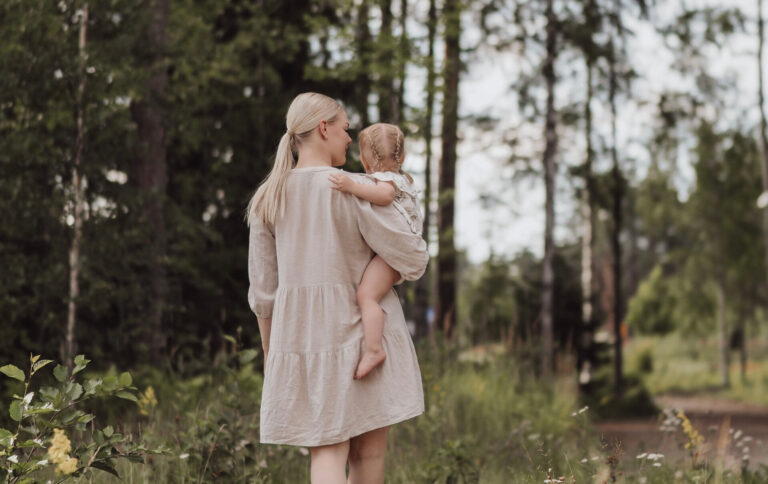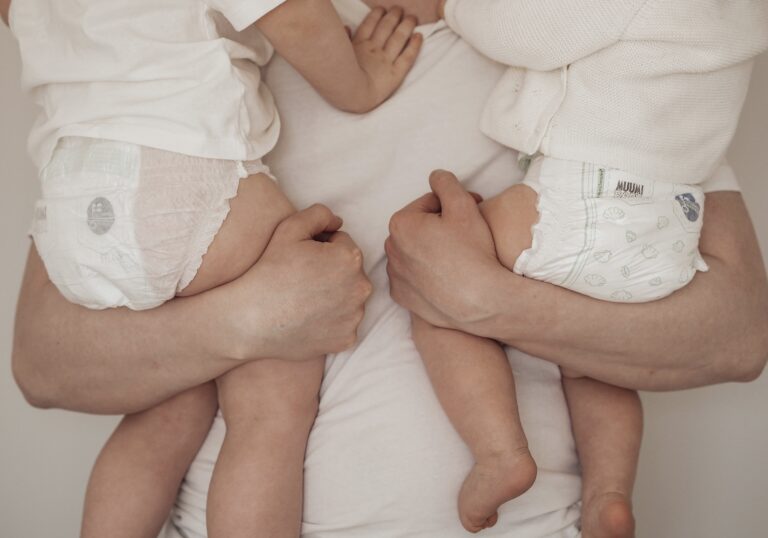Every new parent wonders, “How often should I change my baby’s diaper?” This is an important question, and there are many perspectives and answers. In this article, we will go through general guidelines on the frequency of diaper changes from baby to toddler to ensure your baby stays dry and happy.
How often do you change the diaper?
The frequency of a baby’s diaper changes depends on a number of factors, including the baby’s age, diet and general health. Newborn babies may need a diaper change as often as every two hours, while slightly older babies may survive with 4-6 diaper changes per day. Usually, diaper changes are not needed at night unless the diaper is particularly full or the baby seems to be sweating or uncomfortable. The most important thing is to change the diaper as soon as you notice it is dirty, to avoid skin irritation and diaper rash. The need for changing should not be ignored. Over time, you will learn to recognise the signs and rules of your baby’s need for diaper changing. The frequency of diaper changes will decrease as your baby grows and becomes interested in using the potty. Each child is individual, so the pace and routine will vary.
How to recognise when it’s time for a diaper change?
Your baby’s diaper can provide valuable information about their well-being, digestion and general health. It is important to check your baby’s diaper regularly, preferably at least every two hours, by touching the outside of the diaper and feeling its thickness. Most modern diapers contain a moisture indicator that changes colour when the diaper is wet. The diaper should be changed as soon as it is visibly dirty or smelly, or when the baby is uncomfortable and crying. In addition, some other signs that indicate that it is time for a diaper change include redness or irritation on the baby’s skin, the diaper is pulling back, or the baby is unhappy and restless. The key is to keep an eye on your baby and interpret their messages. Although every baby is different, you will soon become an expert at identifying your baby’s needs.
If the diaper starts to feel tight or starts leaking, it may be time to move on to the next size.
Frequently asked questions about changing a baby’s diaper
Many parents are often concerned about changing their baby’s diaper, especially with their first child. They may wonder questions such as “How often should I change my baby’s diaper?”, “How do I know when it’s time to change the diaper?” or “How can I prevent diaper rash?”. The answer to the last question is that you should always change the diaper as soon as you notice it is dirty, to prevent the spread of bacteria and thus avoid irritation or diaper rash. Another common question is when is the right time to change to the next size of diaper. A general guideline is that if the diaper starts to feel tight or starts leaking, it may be time to move on to the next size. Remember that each baby’s needs are individual and changing diapers becomes easier with experience.
Find out more about when night-time diaper changes are necessary and how they affect your baby’s sleep and well-being. Read more here!
Challenges and solutions to diaper changing in the toddler years
Changing your toddler’s diaper can present a whole new set of challenges. Toddlers are starting to move around more, so they are not always willing to lie down during a diaper change. This can make diaper changes difficult and time-consuming. Try to make diaper changes interesting and interactive, for example by using toys or singing songs. You can also encourage your toddler to get involved by letting them help with cleaning cloths or clothes. Another common challenge is getting the toddler interested in the potty, which can lead to them wanting to take off their own diaper. This can be messy, but it is part of the child’s development. Let your toddler practice potty training in a controlled environment and discuss potty training and drying off with them.

Tips and advice for a more efficient diaper change
Changing diapers can seem like a challenging task at first, but with the right practices, you can make it a smoother and more efficient routine. First, keep supplies easily accessible. Make sure you always have enough diapers and cleaning wipes near the diaper-changing station. This will make diaper changing quick and convenient. Secondly, when you notice your baby’s diaper is wet or dirty, try to change it immediately. This will help prevent skin irritation and ensure that your baby remains comfortable. Thirdly, don’t forget to keep diaper changing time enjoyable for your baby. This might mean playing soothing music, talking or singing to your baby, or offering them a toy while you change their diaper. This can create positive associations with diaper changing and help your baby become more cooperative with future diaper changes.
Encourage your toddler to be actively involved in diaper changing.
Diaper changing routines for your toddler
As your baby grows up, your diaper-changing routine will change too. Communication with your toddler will improve, so you can explain to them what you’re doing and why – this can help reassure them. Routines also help keep the day predictable for toddlers. This is why changing diapers at certain regular times, such as in the morning, before and after naptime, in the evening before bedtime and in between if necessary, can be helpful.
You can also encourage your toddler to be more active during diaper changes. For example, ask them to give you a new diaper or cleaning wipes, this will involve them in the process and keep them busy. Toddlers may also be reluctant to stay on the changing mat – in this case you may want to try changing diapers standing up, especially if they have already started potty training.
Are you planning to start potty training? Read our best tips for effective learning here!
The importance of diaper changing for your baby’s well-being
The importance of diaper changing for the baby’s well-being should not be underestimated. A stained diaper can make your baby uncomfortable and irritate sensitive skin, which may lead to diaper rash. This is an often painful condition that can cause irritation and swelling in the diaper area. Regular diaper changes keep the baby clean and dry, prevent the development of rashes and reduce infections.
Diaper changing also offers an excellent opportunity to strengthen the bond with the baby. This is the time when you can focus exclusively on the baby, laugh, play, sing songs and exchange soft looks. Remember that even though changing diapers can sometimes seem like a routine, for your baby it is a precious time together, during which they feel safe and loved.
How to prepare for a diaper change?
Preparing for a diaper change can make the process much easier and less stressful. First, make sure you have everything you need at your hands reach before you begin. This includes a clean diaper, cleaning wipes, diaper creams, and a change of clothes.
Before you begin, make sure the diaper changing area is clean and safe. It is recommended that the baby is either on a changing table or some other suitable surface that is padded and offers enough space.
Before removing the dirty diaper, open a new diaper and place it ready nearby. This saves time and reduces the chance of mess. Reading and reciting can also help the baby to calm down and make diaper changing a pleasant experience for both.
The easiest way to remember to prepare for a diaper change is to maintain a diaper changing routine. Click here for our advice on making diaper changing a routine!
Diapers are available in different sizes and models, so it’s worth it to try several options to find the best fit.
Selecting and usage of diaper changing products
Choosing the products needed for diaper changing can be challenging, as there is a wide range of options on the market. When making choices, it is important to take into account the sensitivity of the child’s skin, the absorbency and fit of the diaper. Diapers are available in different sizes and models, so it’s worth it to try several options to find the best fit.
Cleaning wipes are another essential part of diaper changing. They should be gentle on the child’s skin and at the same time effective enough to clean if necessary. Some parents prefer wet wipes that are paraben-free and alcohol-free.
Diaper creams can play a significant role in preventing and treating diaper rash. They protect the skin from moisture and relieve irritation. There are different creams on the market for different needs.
In addition, it is important to store diaper changing supplies in a place that is easily accessible, but at the same time safe from the child’s reach.
Order a free Diaper hero diaper sample
Identifying individual needs and choosing suitable products can be a challenging task. That’s why we at Moomin Baby offer the opportunity to order a free diaper sample so that you can try our finnish diapers and test whether they are suitable for your family.
Moomin Baby diapers are known for their high quality, good absorbency and domesticity, which makes them an excellent choice for many families.
It is important to note that the sample pack contains 2 size 1 Newborn diapers and 2 size 2 Newborn diapers.
We welcome you to try Moomin Baby diapers by ordering a free Diaper hero sample here!










